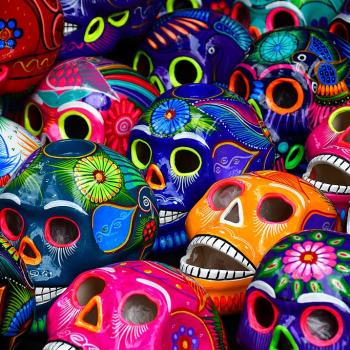SHADES OF BLACK: Akashic Press has a demi-fascinating series of books called _________ Noir, where ________ is the name of a city or area. The idea is that each volume has stories which are in some sense “noir” and which capture some essential element of the setting. I’ve read almost all of Moscow Noir (didn’t finish it because I somehow lost the book in a Whole Foods in Tenleytown, which is pretty much the least noir place in the entire world) and all of Indian Country Noir, so here are a couple thoughts on how those books differ. Wild overgeneralizations ahead!
Moscow Noir is basically roughed-up stories about roughed-up men, with the occasional girl in cheap lipstick. It has a lot of self-consciousness about its noir elements, a lot of explicit references to Hollywood. The men are all low-level thugs, life’s losers, and the overall atmosphere is Tenement, Half-Drunk. I liked it a lot! Fans of LA Confidential might check it out.
Indian Country Noir is much more varied in tone. There are several revenge stories, and that revenge is often at least somewhat satisfying for the reader, as vs. Moscow Noir where revenge is always a failure which leaves the reader feeling thwarted and sad. The political elements, the specific nature of racism and oppression, are much more explicitly-named here than in the Russian book.
Native religion is a real, viable option for these characters, whereas Russian Orthodoxy is only mentioned in one story in Moscow Noir and is treated with a certain half-respectful acidity there. Several ICN stories are written as if Native religion is true, real, the actual story of the world. Sadly, I think if those stories received a contemporary genre classification they’d be called “magical realism,” because mainstream lit-fic isn’t allowed to believe in God or the gods anymore. On a perhaps-related note, peace is a more explicit theme in this book than in Moscow Noir, although I’m not sure it’s ever presented as a real possibility.
You could say that the Moscow book is noir because what consistently fails is the protagonists’ struggle for success or at least escape, and the Indian Country book is noir because what consistently fails is the protagonists’ struggle to make peace. That’s reductive, but I do think it might be a bit illuminating.











